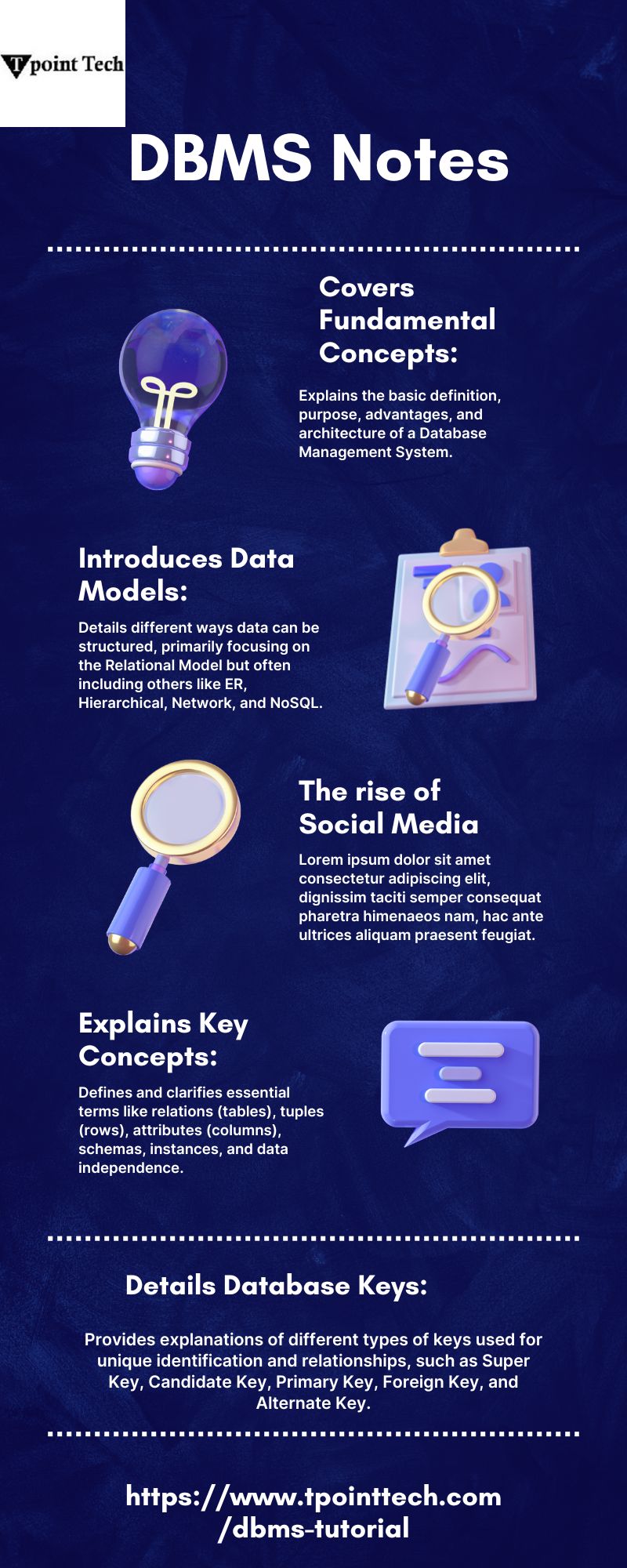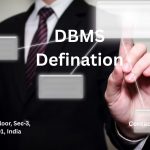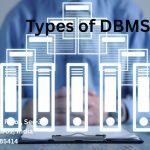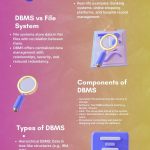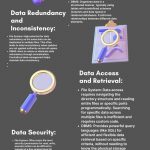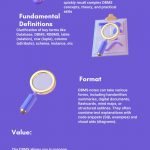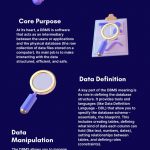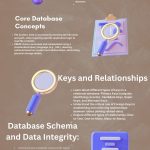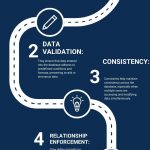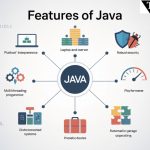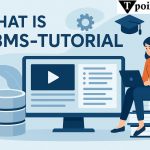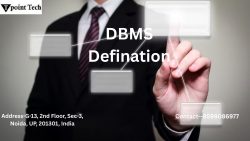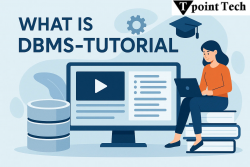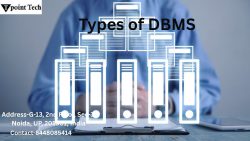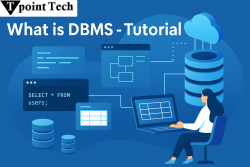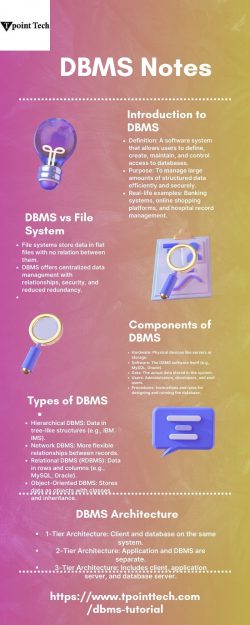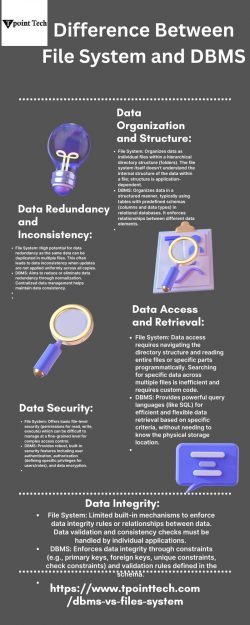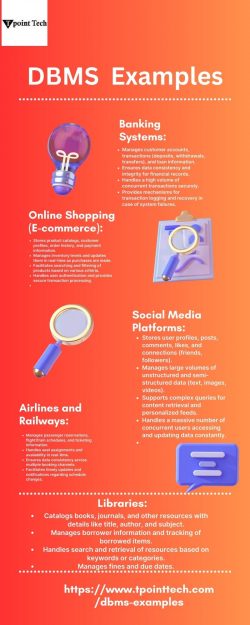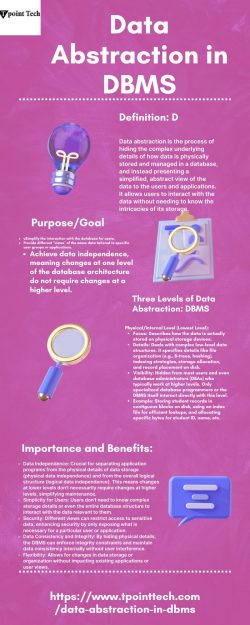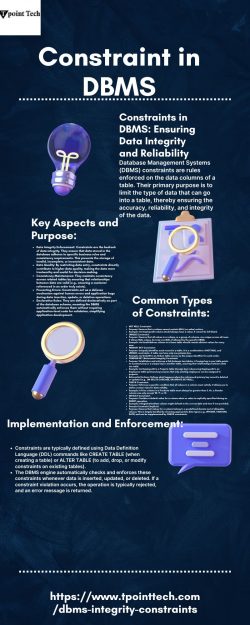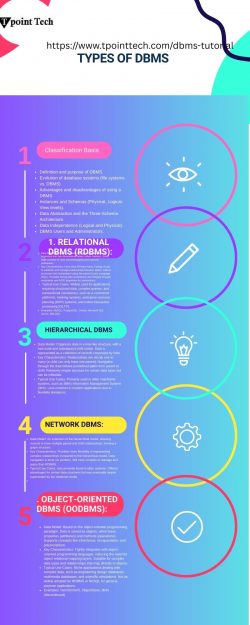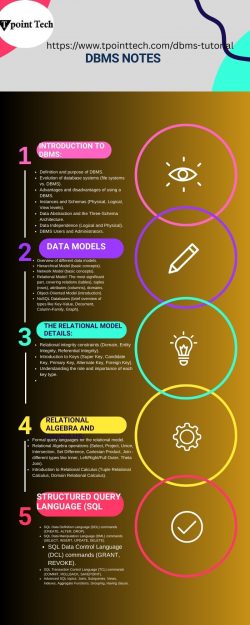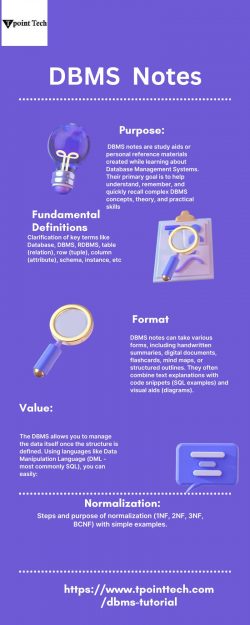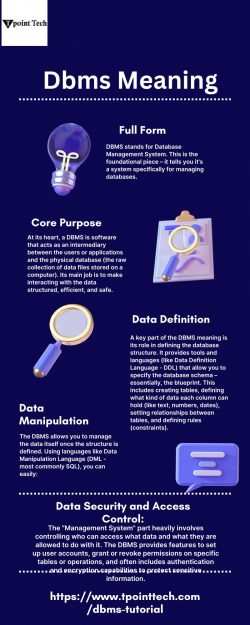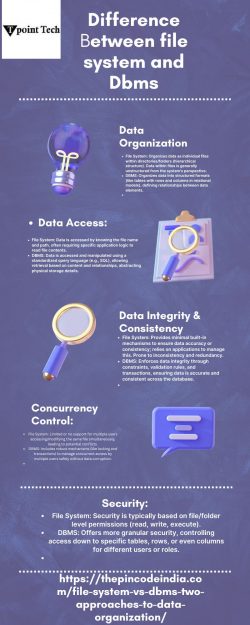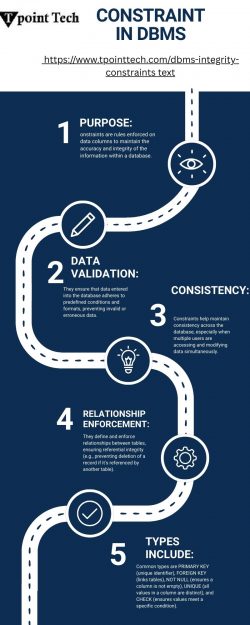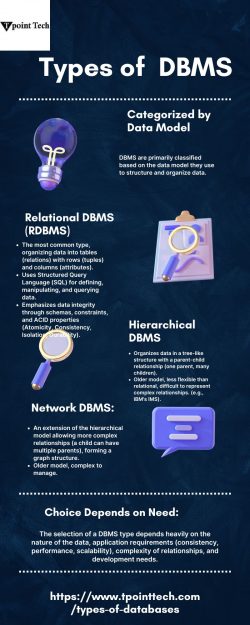DBMS Notes -TpointTech
- Covers Fundamental Concepts: Explains the basic definition, purpose, advantages, and architecture of a Database Management System.
- Introduces Data Models: Details different ways data can be structured, primarily focusing on the Relational Model but often including others like ER, Hierarchical, Network, and NoSQL.
- Explains Key Concepts: Defines and clarifies essential terms like relations (tables), tuples (rows), attributes (columns), schemas, instances, and data independence.
- Details Database Keys: Provides explanations of different types of keys used for unique identification and relationships, such as Super Key, Candidate Key, Primary Key, Foreign Key, and Alternate Key.
- Covers Relational Algebra and Calculus: Explains the theoretical foundations for querying relational databases.
- Introduces SQL (Structured Query Language): Covers the basic commands and concepts for defining (DDL), manipulating (DML), and controlling (DCL) data.
- Explains Normalization: Describes the process of organizing data to reduce redundancy and improve integrity through different normal forms (1NF, 2NF, 3NF, BCNF, etc.).
- Discusses File Organization and Indexing: Explores how data is physically stored and how indexes are used to speed up data retrieval.
- Covers Transaction Management: Explains concepts like ACID properties and concurrency control mechanisms to ensure data consistency during multiple simultaneous operations.
- Includes Database Security and Integrity: Touches upon how data is protected from unauthorized access and how rules are enforced to maintain data accuracy and consistency.
- Often Includes Diagrams and Examples: Uses visual aids like ER diagrams and provides SQL query examples to illustrate concepts.
- Serves as a Study Aid: Provides a structured summary of important topics for learning and reviewing DBMS concepts.
